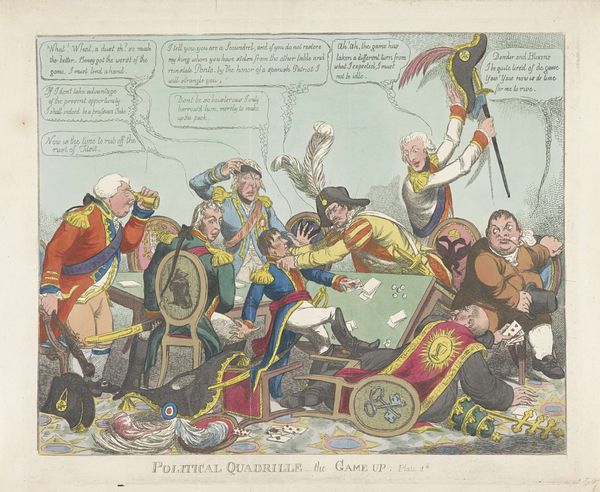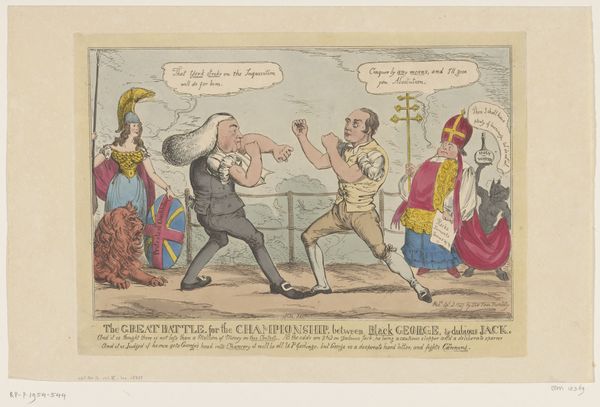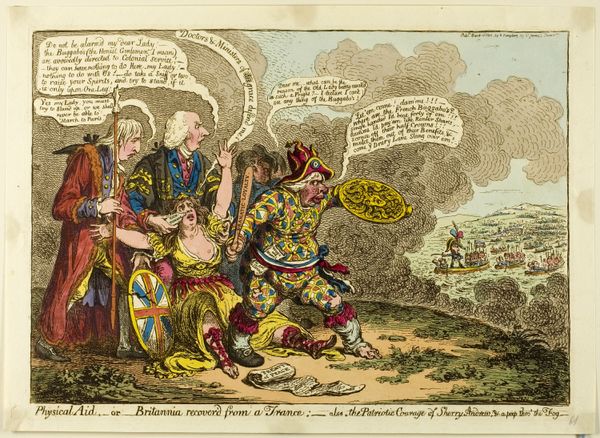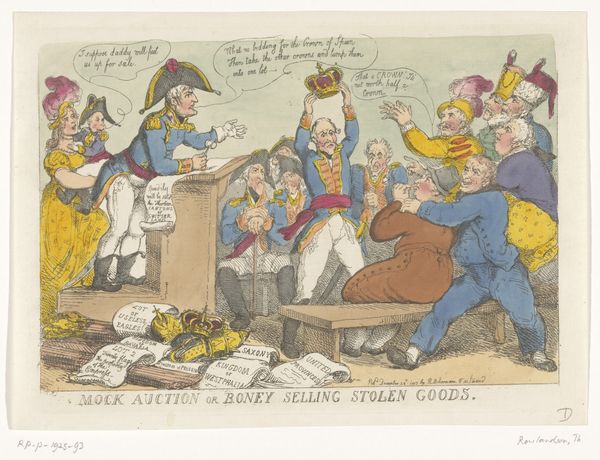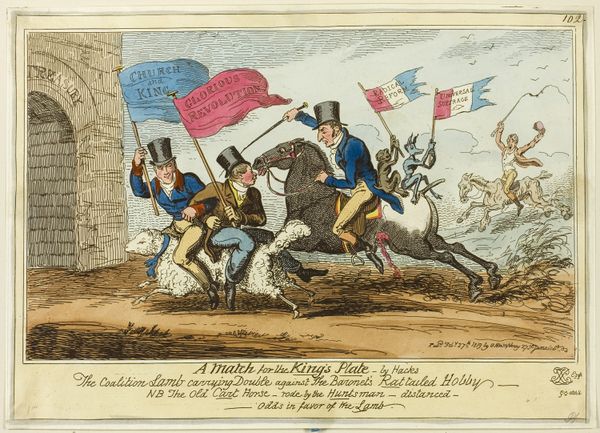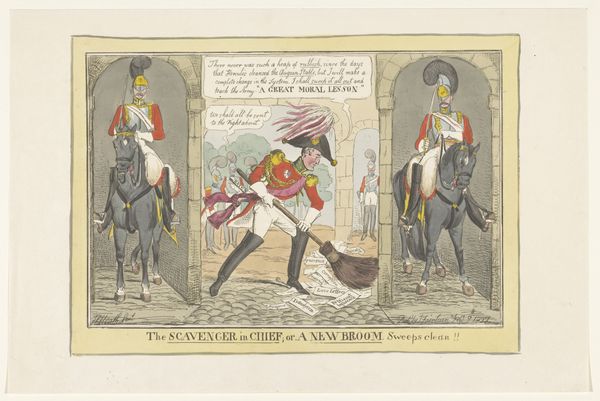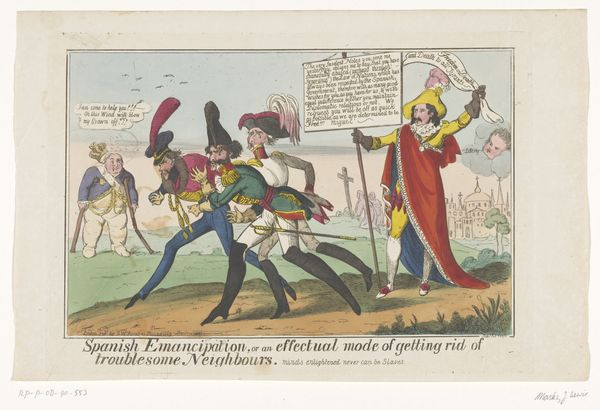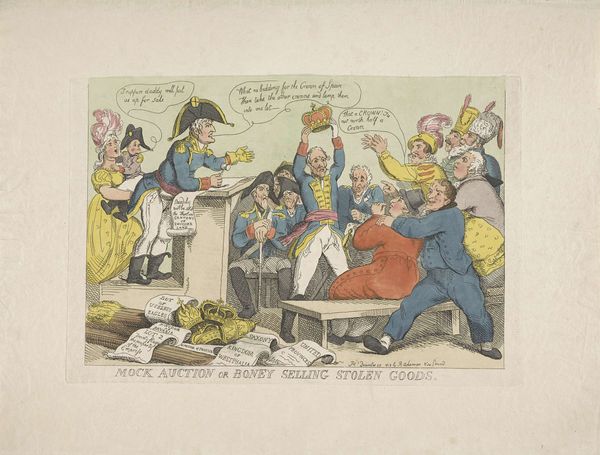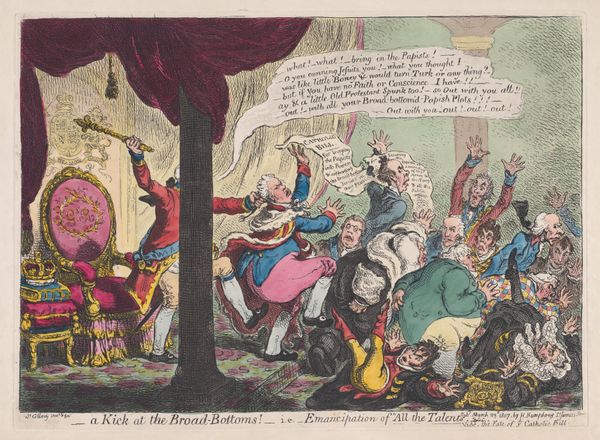
print, etching
# print
#
etching
#
caricature
#
watercolour illustration
#
history-painting
Dimensions: height 247 mm, width 348 mm
Copyright: Rijks Museum: Open Domain
Curator: This print, attributed to J. Lewis Marks, is titled "The Three Gentlemen of Verona on a Legitimate Crusade, or the Cry of Blood." Likely created in 1823, it provides a satirical look at King Louis XVIII and the Congress of Verona. Editor: Immediately striking is its caricature style, the way figures are exaggerated. The color palette is muted, and the etching line-work precise. The overall feeling is of constrained chaos and absurdity. Curator: It certainly reflects a specific moment in European politics. The Congress of Verona in 1822 saw European powers discussing intervention in Spain to restore the Bourbon monarchy. This print cleverly criticizes that agenda, portraying it as a farcical, self-serving crusade by the 'Three Gentlemen' from Verona. Editor: Yes, note the visual layering: a road sign, indicating a ‘dangerous road to Verona', dominates the middle ground behind the main characters. There is John Bull trying to intervene and the composition cleverly isolates and caricatures the three allied 'gentlemen.' It reads top to bottom and each part makes it increasingly critical. Curator: Exactly. And look at who is hauling them. Labeled "Slaves of the Holy Alliance". This imagery encapsulates how the great powers exploit weaker nations to advance their reactionary goals. Editor: I notice, particularly, the contrasting textures: the smoothness of the royal figures, especially the ones directing the whole affair and those poor souls pushing their elaborate transport who look positively haggard! This juxtaposition intensifies the message. Curator: Political prints like this played a crucial role in shaping public opinion in the 19th century. By visually ridiculing the actions of monarchs, artists like Marks challenged authority. This critique could have resonated broadly among citizens weary of continuous war. Editor: The entire scene is cleverly staged. A mix of symbolism and overt mockery to effectively communicates its anti-establishment viewpoint to a wide audience, something achieved with great compositional and expressive line-work. Curator: This piece showcases how art engaged directly with its social context, serving as a form of protest. Editor: And, beyond the message, we see an inventive and very skilled printmaker at work, turning political critique into a lively image.
Comments
No comments
Be the first to comment and join the conversation on the ultimate creative platform.

